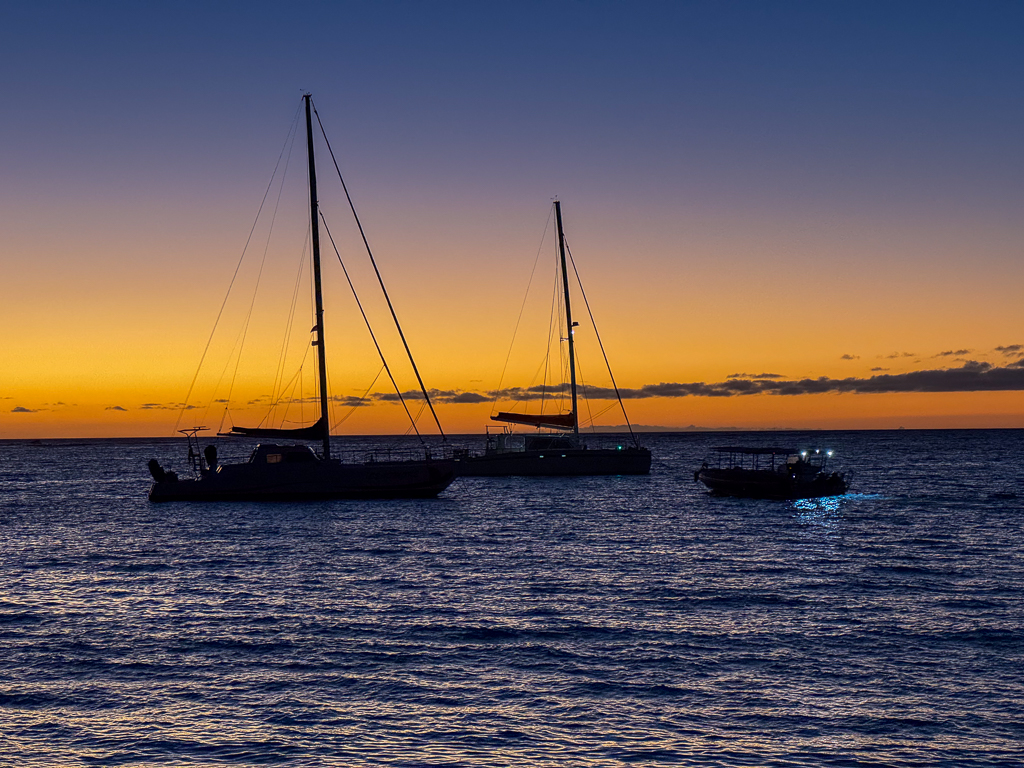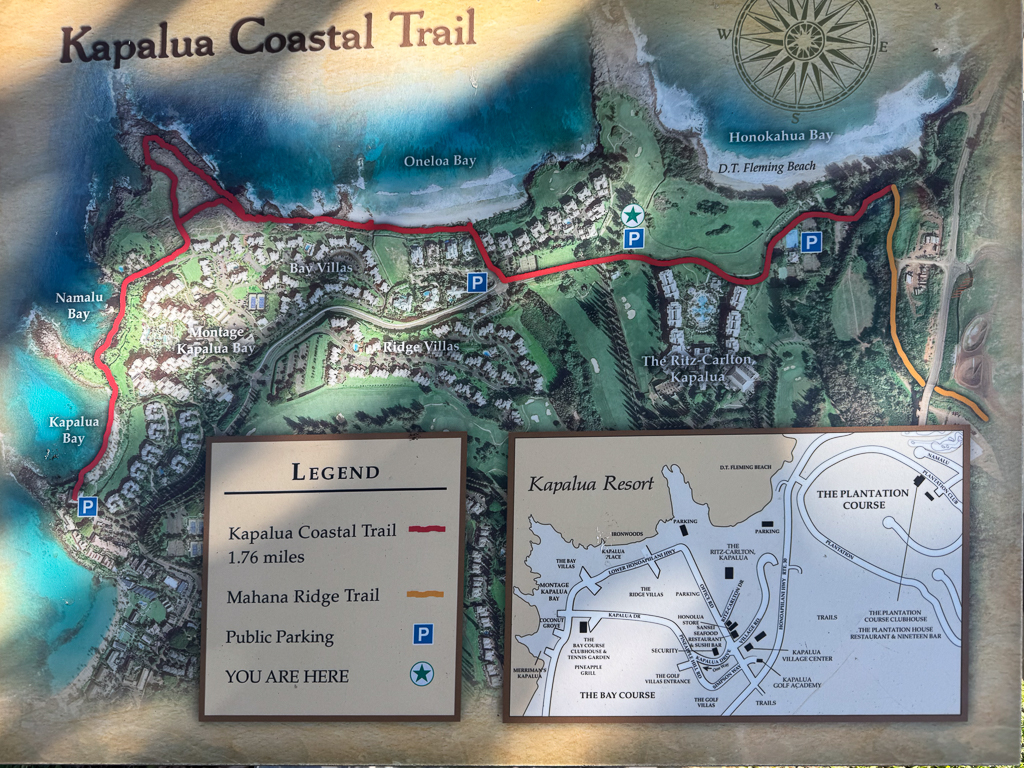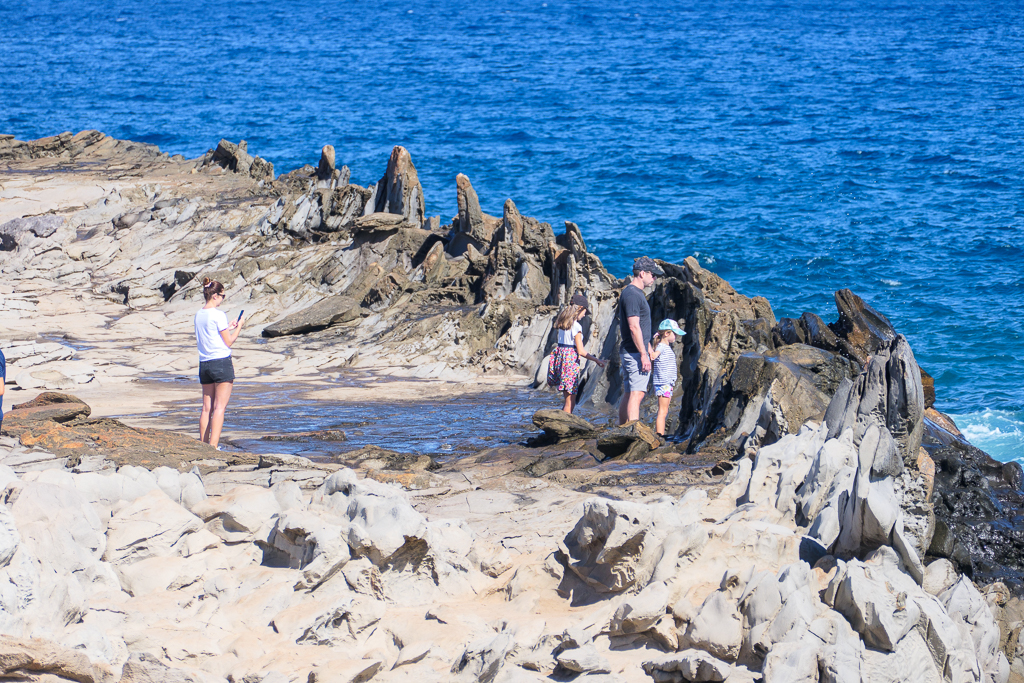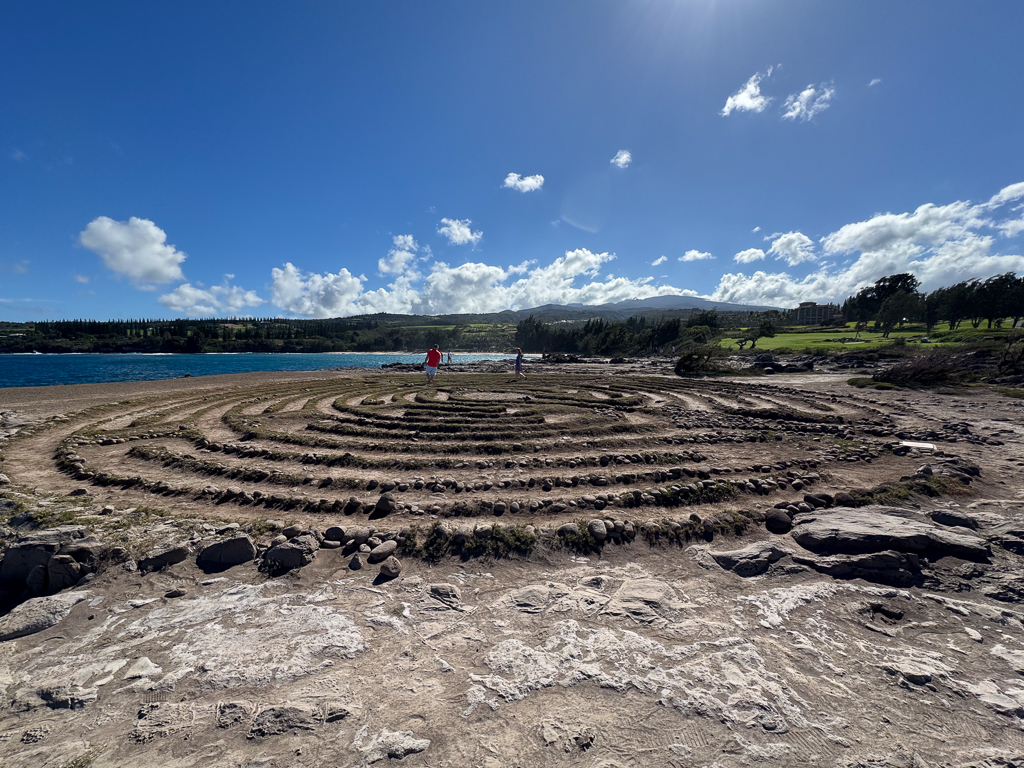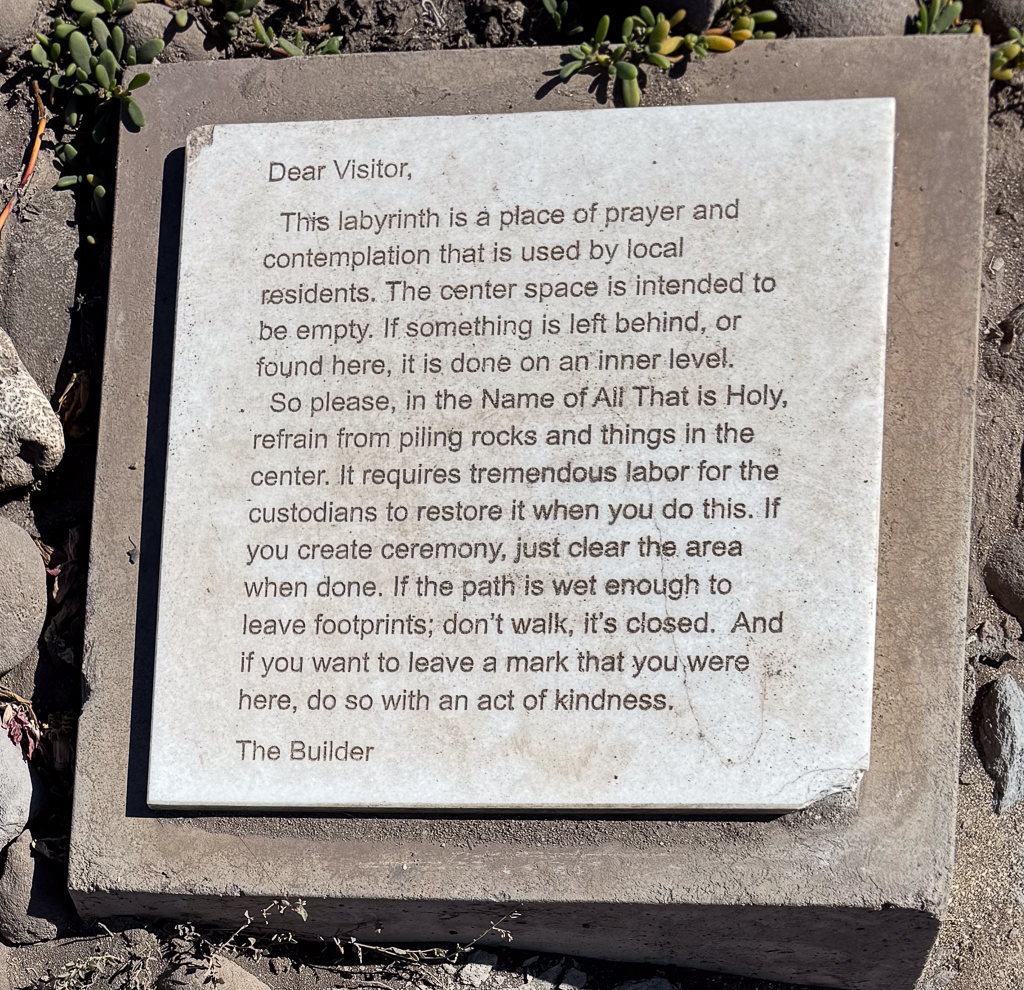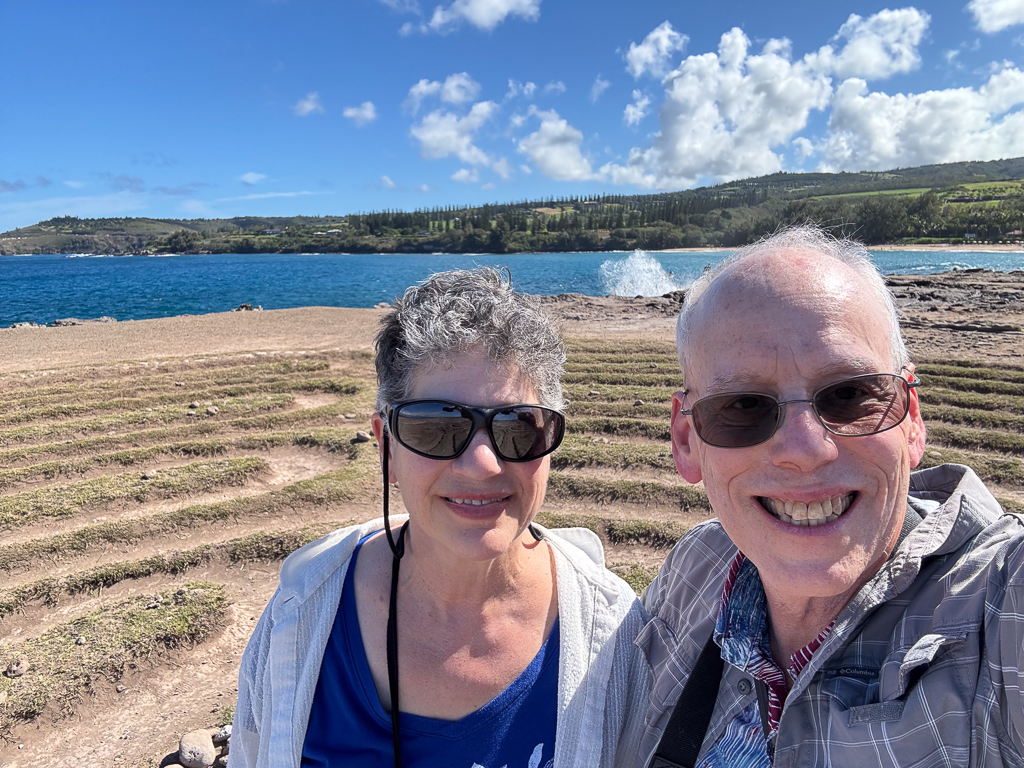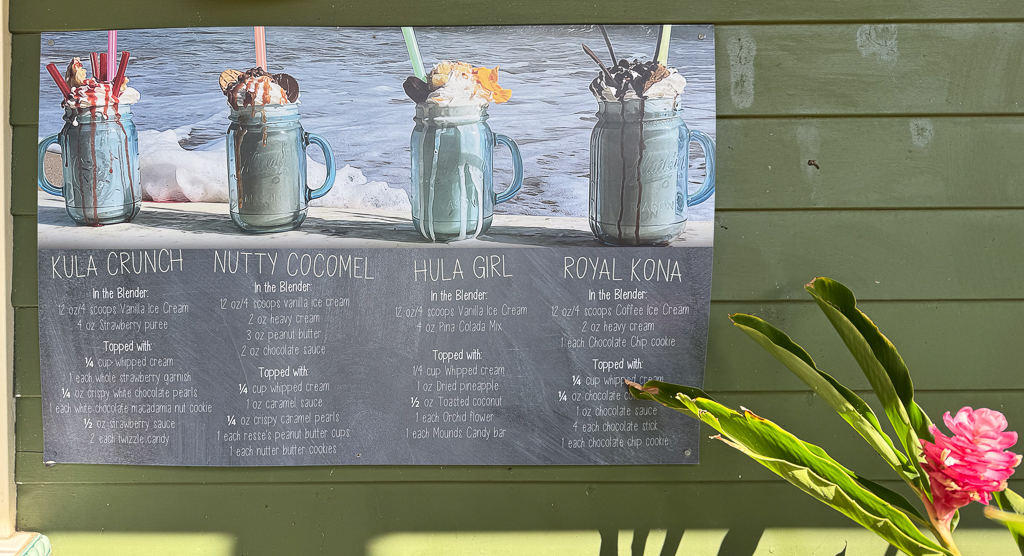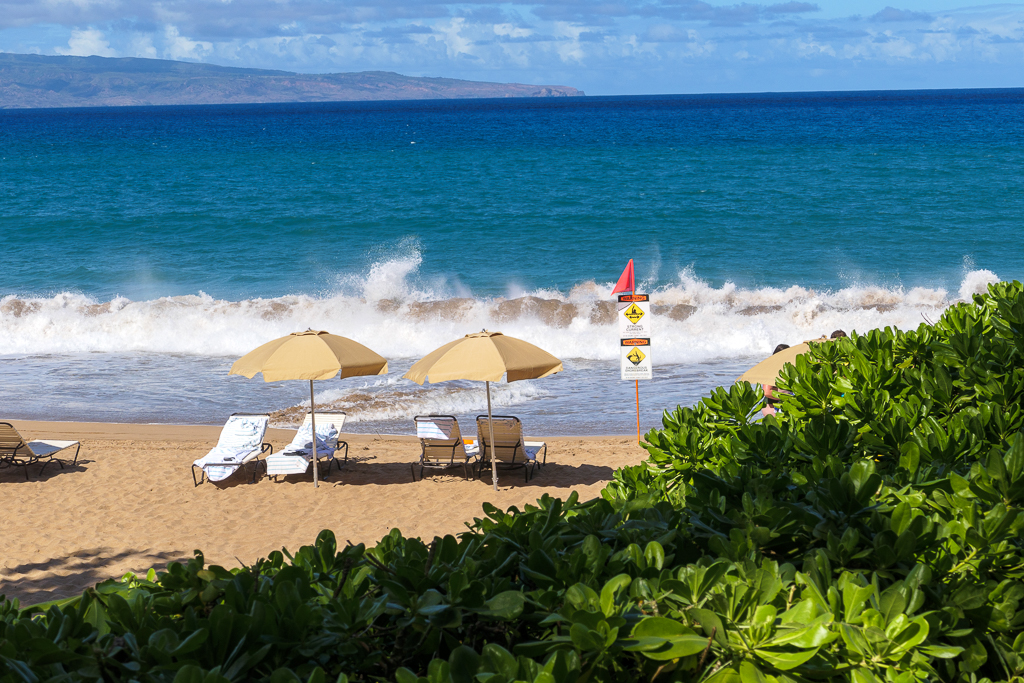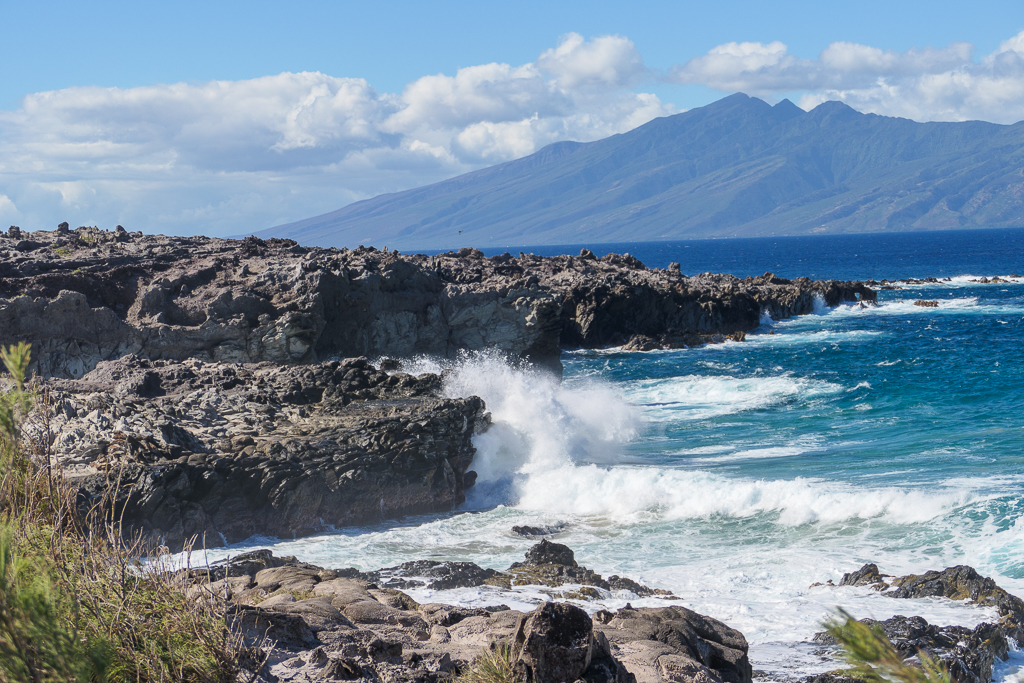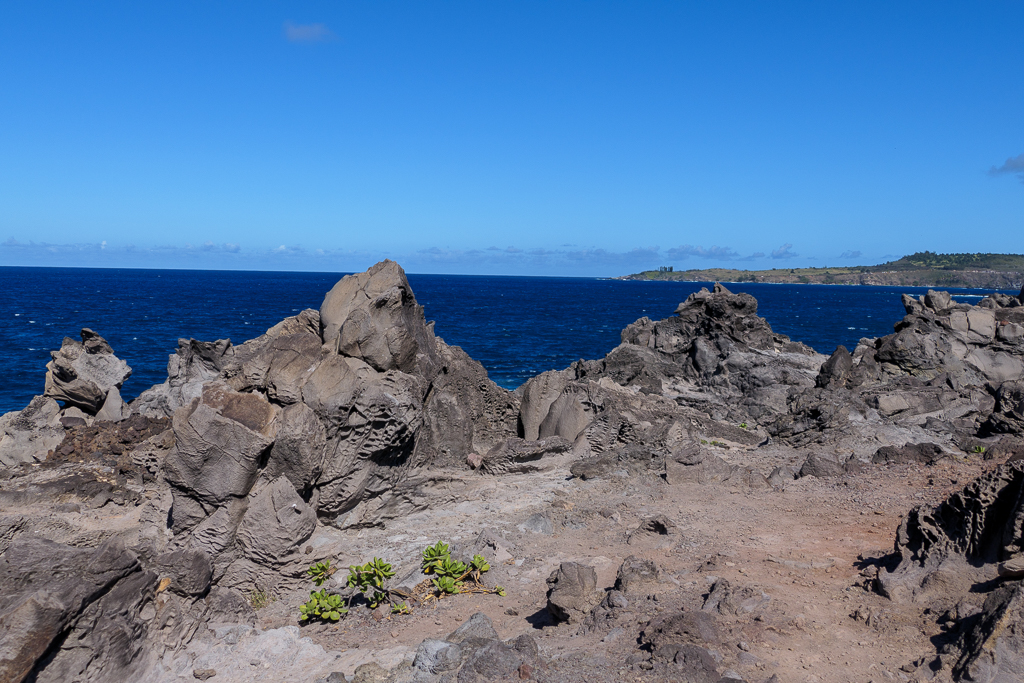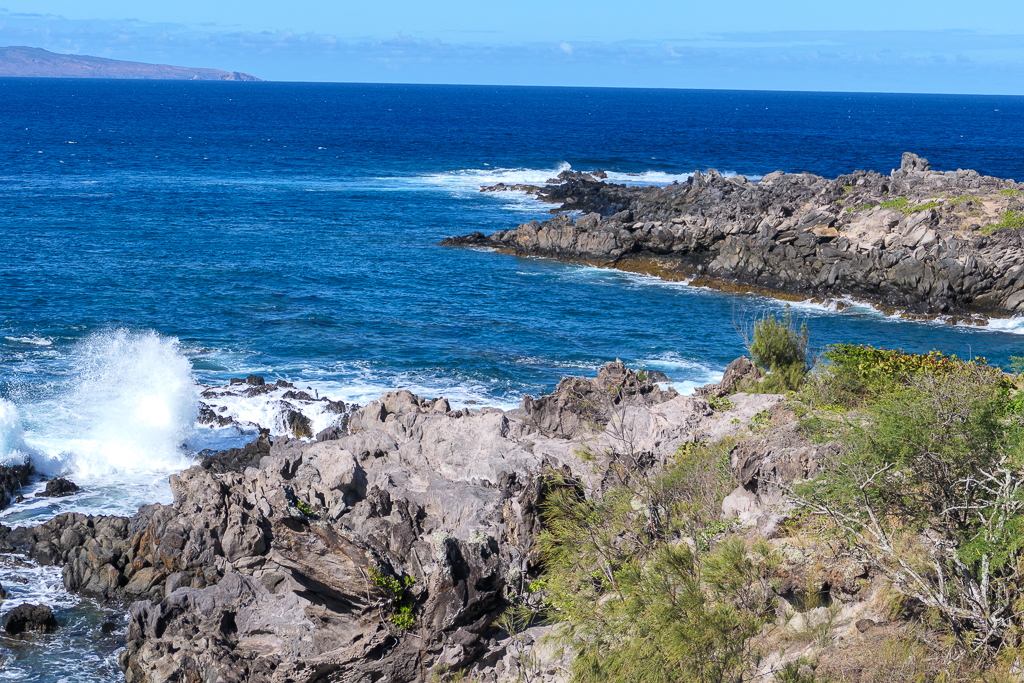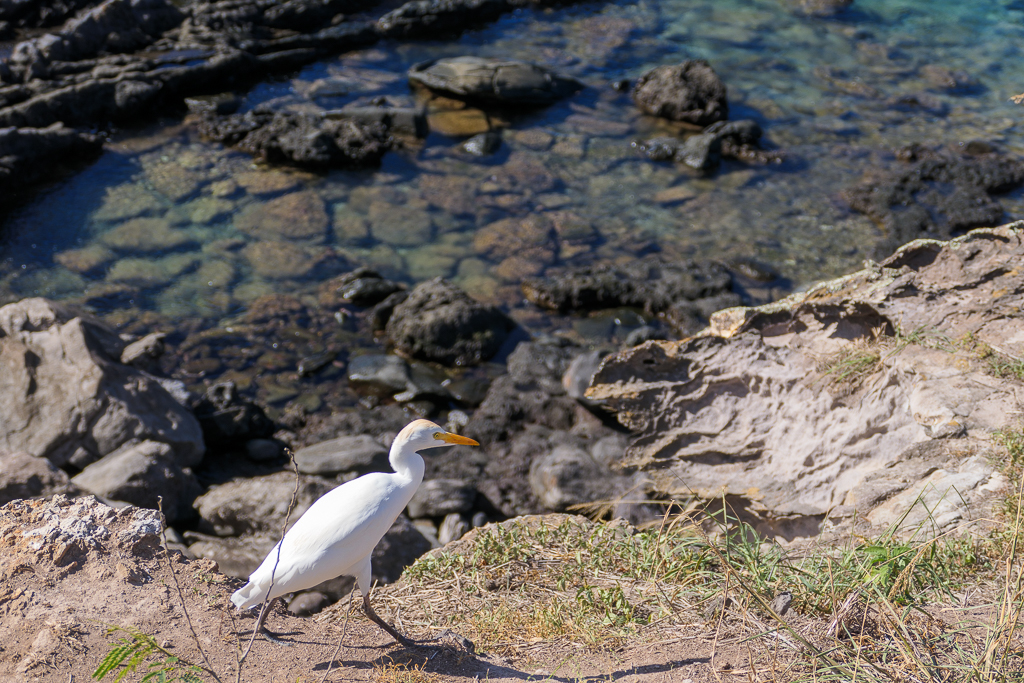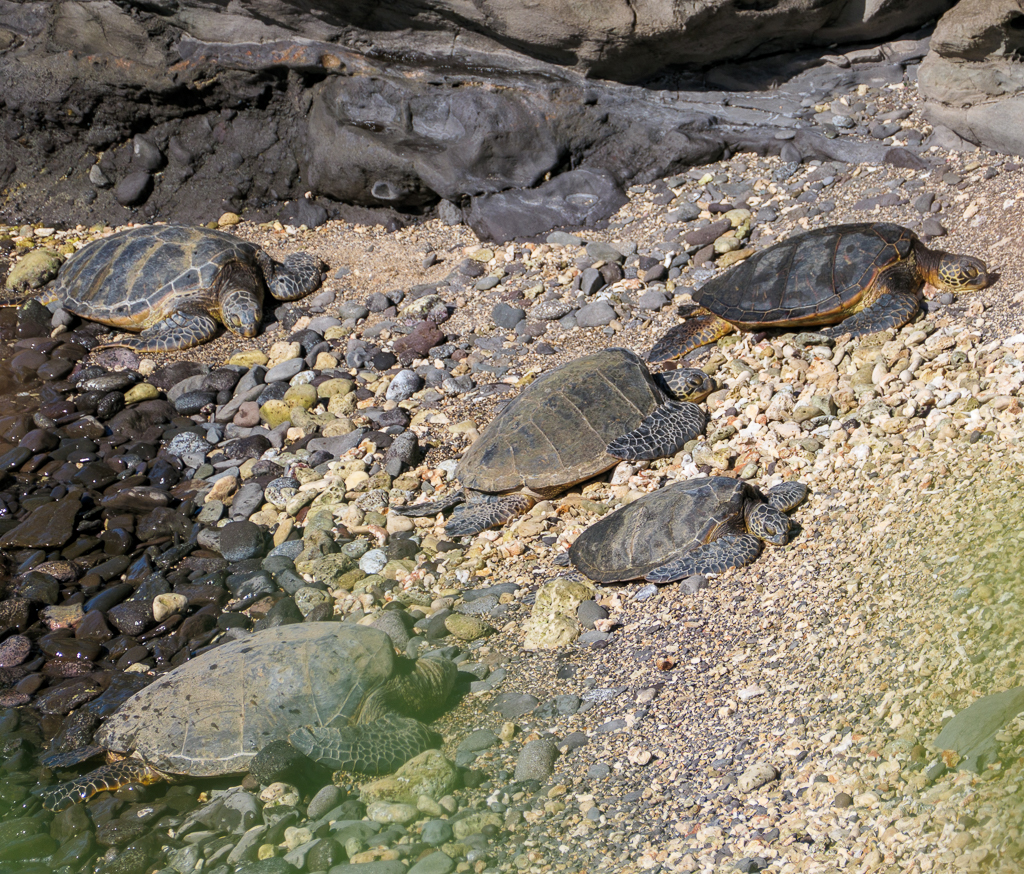Today was a travel day. We left the Westin Nanea on Maui about 8:45am and arrived at the Marriott Waikoloa Beach on Hawai’i about 1:30pm – our room was ready, which was a nice surprise.
We stopped by the Island Gourmet Market (which is an ABC store with pretensions) in Queen’s Marketplace (one of the two large outdoor malls within a five minute walk of the hotel) and picked up some pre-made salads for a light lunch – they weren’t half-bad. Then we drove ten minutes to the closest real grocery store to pick up the breakfast essentials that Island Gourmet didn’t have.
We had dinner at the Lava Lava Beach Club down the beach from the hotel – they have tables right in the sand, but we would have had to wait a while to get one, so we took a table on the concrete floor. We both had fish – Diane went for seared ahi, while I had macadamia nut crusted mahi-mahi. Much better than our lunchtime salads, that’s for sure! And foofy drinks and ice cream sandwiches didn’t hurt, either.
The sun set while we were having dinner; it was a clear evening, so the sky didn’t get very colorful, but it still made for a nice walk back to the hotel.
